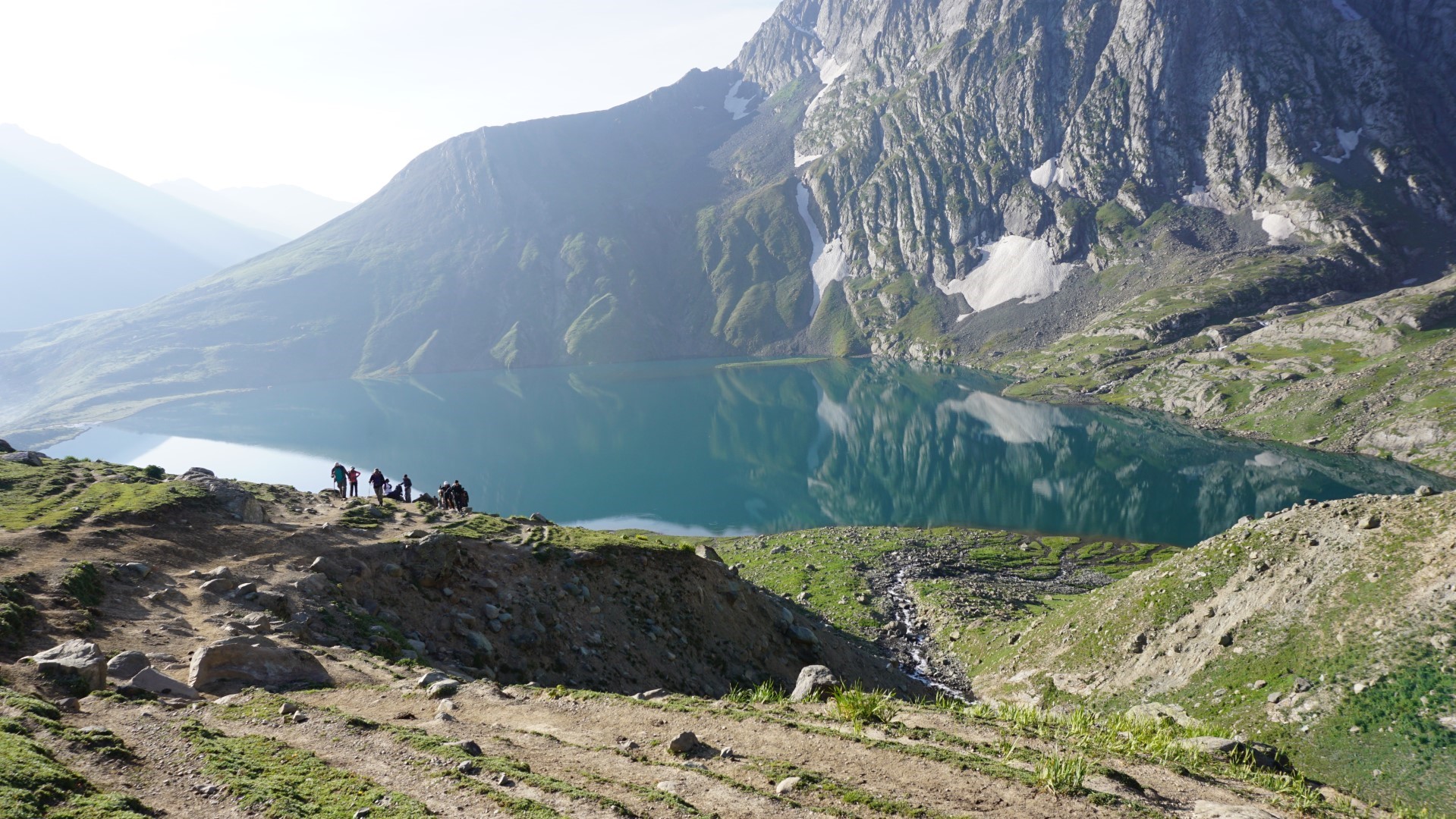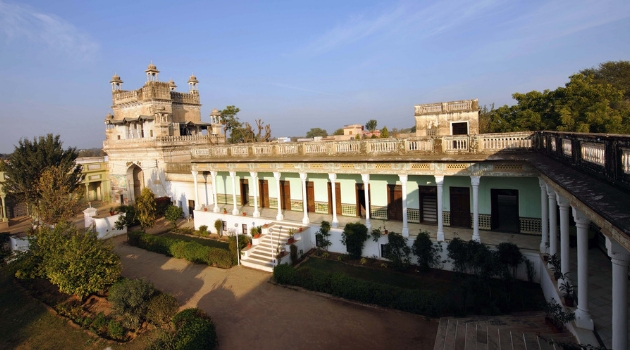

Visit to the Piramal Haveli: A Home away from Home
After a dusty four hour drive from Delhi, we enter the town of Baggar in the Shekhavati region of Rajasthan and pass through a tall white archway, with Piramal Gate written across it. Immediately to our left is our destination—the Piramal Haveli. At first glance, the hotel seems a bit of a disappointment compared with the grand edifices of Rajasthan like the flagship Neemrana Fort-Palace or the recently opened Tijara Fort-Palace in Alwar that I have visited. It is a large though somewhat dilapidated mansion, with moss-stained balustrades and faded murals, and a small garden with a fountain enclosed within its two wings. The Innova crunches to a stop on the gravel in front of the left-hand portico. We step out and are greeted warmly by the manager, Raju, and ushered into the cool interior of the building.
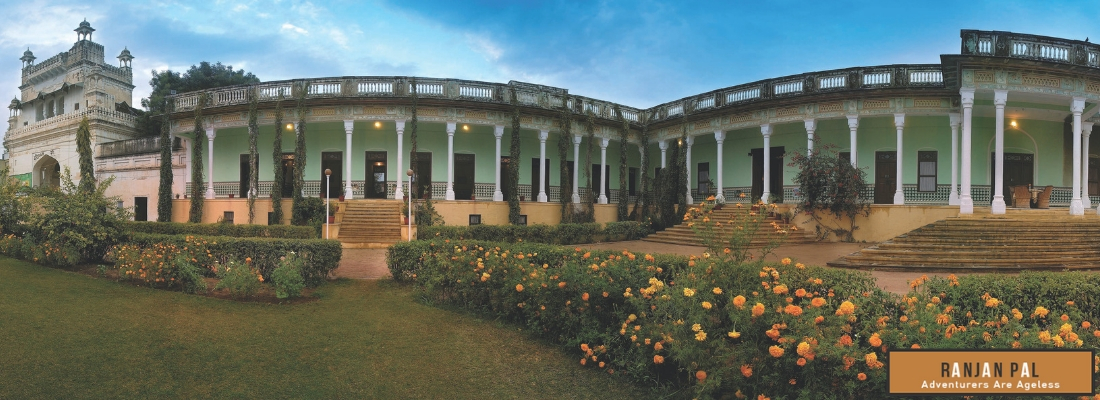

The word haveli, which is Persian in origin, means “a surrounded or an enclosed place”, and this definition is manifested in the two courtyards around which the entire house is built. The purpose of the two courtyards was to reinforce the social norms of traditional Rajput society, specifically the strict segregation of men and women. The outer courtyard, or mardana, was the grander one where the men would receive visitors and conduct their business, while the smaller inner courtyard, or zenana, was the one to which the women were confined and where they carried out their household chores and daily activities. The havelis of Shekhavati typically were much larger than they needed to be as mere dwelling places. Rather, they were intended as a statement of wealth and status of the Shekhavati merchants who had them built and also as a way of keeping their families happy during their long absences from home.
In the case of the Piramal Haveli, which was built in 1928 as the home of Seth Piramal Chaturbhuj Makharia and which is currently being managed by Neemrana Hotels, there are eight rooms, all of which open out onto the outer courtyard. We are given the Grey Room, which is quite large, with barred windows and a sitting area. An antique wooden almirah and a dresser add to the charm of the room. The walls, lit by fluted glass sconces, are painted a pale bluish-green and rise up to a vaulted ceiling which is divided into three sections—they remind me of upturned canoes lined up side by side.
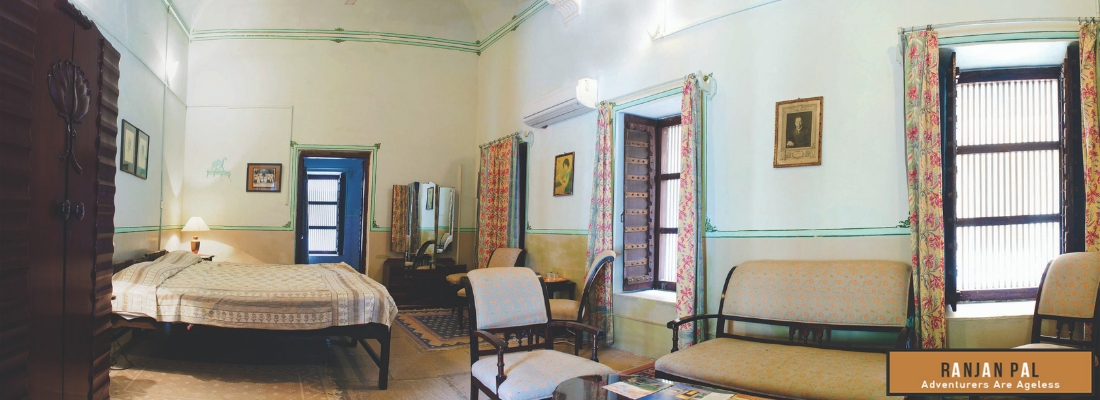

Each room in the Piramal Haveli is decorated in its own unique style and the furnishings are simple so as to be authentic to the austerity or plainness of the original haveli. The attention to age-appropriate details extends to the wooden doors, which slam shut and can give you a painful pinch if you are not careful!
Adjacent to the haveli is the Piramal Gate, which has an interesting history. The official version is that the gate was constructed in 1928 by Seth Piramal to welcome Maharaja Sawai Man Singh II of Jaipur who rode in on elephant back. The Rajput ruling class and the Marwari traders had a mutually beneficial arrangement under which the Marwaris were offered the protection of the Rajputs in exchange for the financing of their armies by the Marwaris. But according to the popular version, intense rivalry between the leading Rungta and Piramal trader families led to the construction of the gate by the Piramals. The Rungtas, who were very much old establishment, sniffed at the arriviste Piramals. Seth Piramal, stung to the quick by this supercilious attitude, ordered the construction of the gate across the main thoroughfare so that the Rungtas would always have to pass under it. Legend has it that the Rungtas immediately countered by building another route into town!
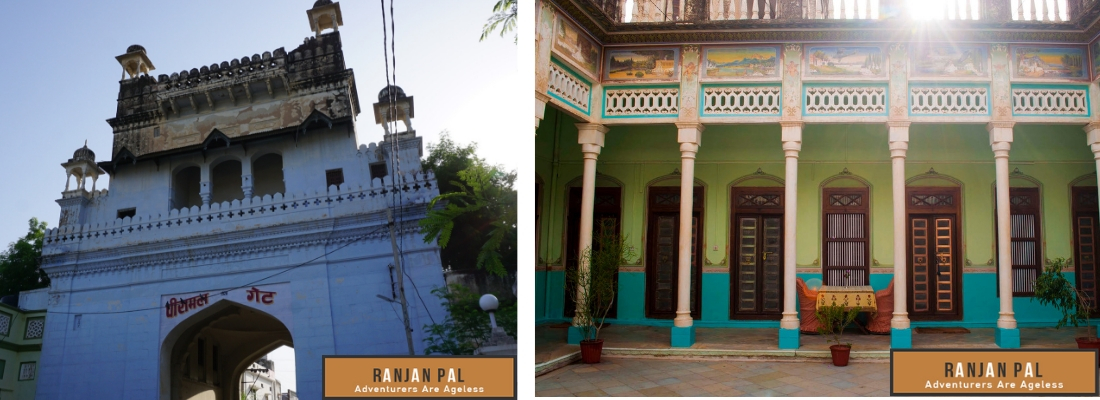

The Piramal Gate at the entrance to Baggar
The outer courtyard with painted murals lining the top
The havelis of Shekhavati are justly famous for their unique painted courtyards, walls, and ceilings. The merchant class spared no expense in hiring the finest artists to decorate their homes with scenes from Hindu mythology as well as scenes depicting their customs, celebrations, and community life. The team of artists hired for this purpose followed the Italian technique of mural painting called buon fresco, which involved mixing the dry pigments with lime water and then applying the paste to the wet plastered wall. Cars, planes, and trains were subjects of considerable fascination in Rajasthan in the early 20th century and these emblems of modernity are in ample evidence in the Piramal Haveli. However, the piece de resistance concerns not the present, but the past. It is the mural of the Surya devta, depicted along with his chariot, drawn by seven horses, which covers the ceiling of the baithak. Wherever you stand or sit, the Sun God looks down at you when you look up at him.
The small staff of the Piramal Haveli—from the affable Raju to the pleasant room attendants Ajay and Pratap—left no stone unturned in making our stay comfortable. Their presence was friendly but not obtrusive, and we had the feeling of being in the hands of long-time family retainers, another hallmark of Neemrana Hotels. The Rajasthani vegetarian food, served in thalis and cooked with little oil, was delightfully light and fresh. The cook, Dhaniram, whipped up some delicious local delicacies like ker sangri ki sabzi (made with dried ker berries and sangri beans), papad mangodi ki sabzi (made with raw papad and sundried moong dal dumplings in a curd gravy), and khachri phali ki sabzi (made with wild cucumber and beans), making the most of the limited vegetables available in the dry and hot region. During both the nights of our stay, we were served dinner in the inner courtyard by the light of a full moon, which made for quite a magical ambience.
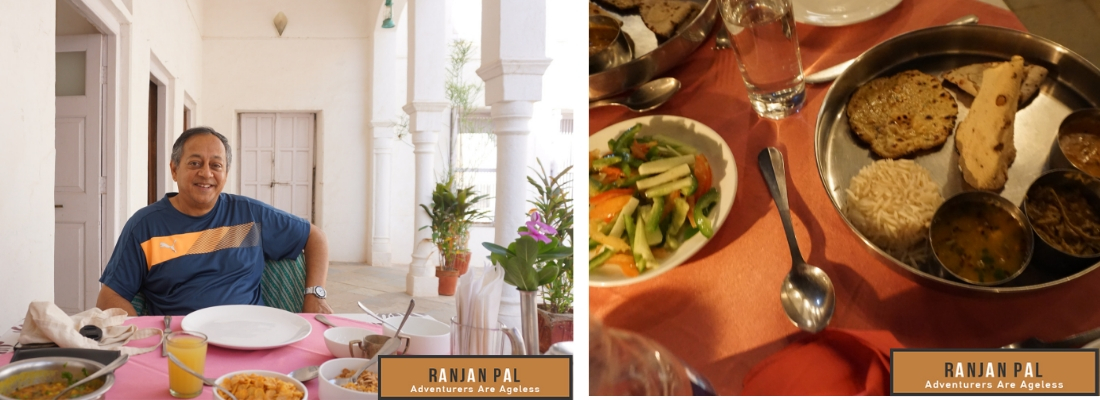

Our haveli experience was as warm and comfortable as slipping into a pair of old bedroom slippers. As Aman Nath, founder and chairman of Neemrana Hotels, observes, “People travel the world to see the difference.” This philosophy ensures that each Neemrana property offers a completely unique experience to visitors. You don’t always need the grandeur and magnificence of a fort-palace to feel special; just the feeling of a home away from home will do.


![]()
![]()

